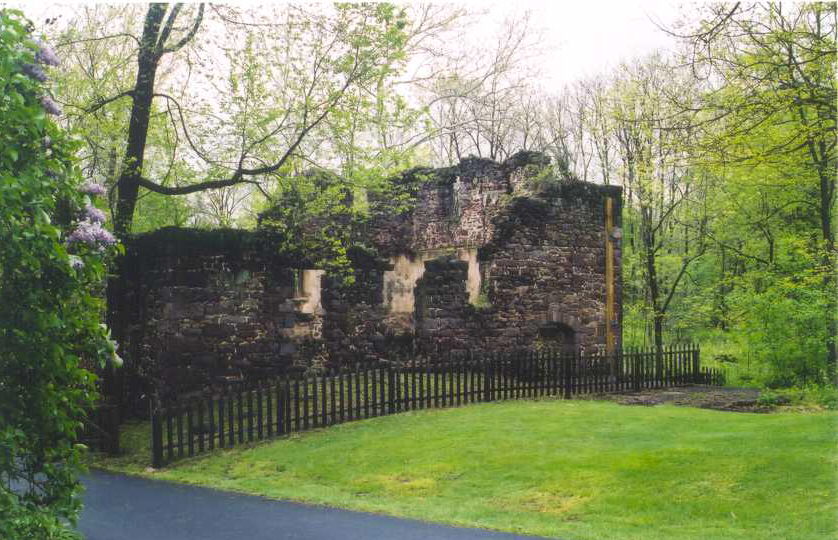Allegheny Aqueduct Historical Park
Allegheny Aqueduct Historical Park

Allegheny Aqueduct Historical Park & Beidler House
The Allegheny Aqueduct was built by the Schuylkill Navigation Company in 1824 under the direction of Engineer Ephriam Beech. This "bridge for boats" was needed because the Allegheny Creek could not be incorporated into the canal system.
The Schuylkill Canal, a slackwater navigation system, began at Mill Creek, Schuylkill County, and traveled to its destination in Philadelphia; both the canal and the aqueduct ceased to be used as a transportation system in 1931.
The aqueduct is a massive 112 1/2 foot structure consisting of five red sandstone and brownstone arches done with the "keystone" theme. In the 1830’s, bricks were added underneath the arches to prevent leakage. The canal was originally lined with clay, but in 1870 a concrete liner was formed into the top of the aqueduct, and metal spikes that protruded from the concrete were used to hold timber planking that prevented the canal boats from scraping on the concrete.
In 1983, the Schuylkill River Greenway Association began efforts to restore the aqueduct and subsequently had the structure listed on the National Register of Historic Places. The restoration efforts were celebrated in February, 1990, and now the Berks County Parks and Recreation Department administers this historic landmark from Berks County’s past.

Beidler House
Located adjacent to the aqueduct, the Beidler House was built in 1783 by Conrad Beidler to serve as a home for the operator of the nearby mill.
The Beidler House is open to the public for an "Open House" in the Spring for an Interpretive Program about the history of the house, mill and aqueduct conducted by costumed guides.
The Beidler House is also open in December for a "Colonial Candlelight Holiday Reception".

Remains of the Beidler Mill
Remains of the Beidler Mill The mill, built around 1766, was destroyed by fire in the early 1950’s, and only the stone walls of the building remain. When it was in operation, the mill was used to process grain. Powered by a water wheel, the mill relied on a 100-foot long holding pond that drew water from the Allegheny Creek; this pond is still visible today. The house and mill serve as a reminder of the area’s agricultural industry and reflect the economic and social prominence of the miller in the local community.
Street Address: 1130 Old River Rd., Gibraltar PA 19508
Directions:
From Reading - 422 E. - Take exit for Rte. 176. After 1/2 mile on Rte. 176, turn right onto exit 3, Rte. 724 Birdsboro & Shillington (this will be the first exit you come to). At the end of the ramp, turn left onto Rte. 724 east, towards Birdsboro. Continue for approx. 2 miles to traffic light at Rte. 568. Turn left onto Old River Rd. Continue 1/4 mile, past aqueduct, over bridge. The grist mill ruins and Beidler House are on the left.
From Pottstown - 422 W. Turn left at traffic light at W. 47th St. Follow this road all the way to Rt. 724. Turn Right onto Rt. 724. Turn right at Rt. 568 (Old River Road.) Beidler House is on the left approx. 1 mile on Old River Rd.
